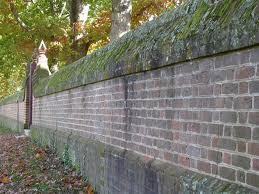Standard Brick Size
It’s interesting to note that the modest ceramic  brick has been around for literally millennia. There have been brick samples discovered in the Middle East that date back 10,000 years. In fact, the earliest known record of them is in the Bible, particularly in Genesis 11:3, and Exodus 1:14, 5:7-8, 14, 16, 18-19.
brick has been around for literally millennia. There have been brick samples discovered in the Middle East that date back 10,000 years. In fact, the earliest known record of them is in the Bible, particularly in Genesis 11:3, and Exodus 1:14, 5:7-8, 14, 16, 18-19.
According to Biblical texts, the early bricks were made from earth and straw by the Israelite slaves for their Egyptian masters. Sun-dried bricks were first made in the ancient Mesopotamian city of Ur sometime in 4000 BC. The Roman Empire developed the use of bricks made from a fired process, a practice later passed down to other countries such as southern and western Germany. In China, fired bricks are believed to have been in use as far back as the Western Zhou dynasty some 3,000 years in the past.
A Gothic architecture style known as brick Gothic gained popularity in Northern Europe in the 12th century. Brickwork somewhat fell out of favor during the Renaissance and Baroque periods, during which plaster was used to cover up exposed brick surfaces. However, it became fashionable to show off brick walls again by the mid-18th century. The use of bricks for construction fairly declined during the 19th century as architectural trends shifted to upward construction for buildings and other materials such as cast iron and eventually concrete and steel were brought-in in its place. By the latter part of the 20th century, brickwork had been limited to building smaller structures or as decorative covering on the exterior or exterior walls of buildings.
Bricks are typically made at a size small and light enough to be handled efficiently by the bricklayer even with a single hand, allowing the free hand to hold the trowel. Since bricks normally lie flat, its width is limited to the convenient distance between the thumb and the fingers, which is usually 4” or around 100 mm. A brick’s length is often roughly two times its width, which is more or less 8” or 200 mm.
The standard brick size actually differs in various countries around the world. The average brick size in England has been pretty much constant throughout the centuries, although its depth had changed a bit from not more than 2” (51 mm) in previous years to around 2 ½” (approximately 64 mm) in modern times. Currently, the typical brick size in the United Kingdom is around 8 ½” x 4” x 2 ½” (215 x 10.25 x 65 mm), while the average size in the United States is 8” x 4” x 2 ¼” (203 x 102 x 57 mm). The standard brick size in Australia is 9” x 4 1/3” x 3” (230 x 110 x 76 mm), 9” x 4 ¼” x 2 ¾” (240 x 115 x 71 mm) in Germany, 9” x 4 ¼” x 2 ¾” (228 x 107 x 69 mm) in India, 10” x 4 ¾” x 2 ½” (250 x 120 x 65 mm) in Russia, 8 ¾” x 4” x 3” (222 x 106 x 73 mm) in South Africa, and 10” x 4 ¾” x 2 ½” (250 x 120 x 62 mm) in Sweden.





